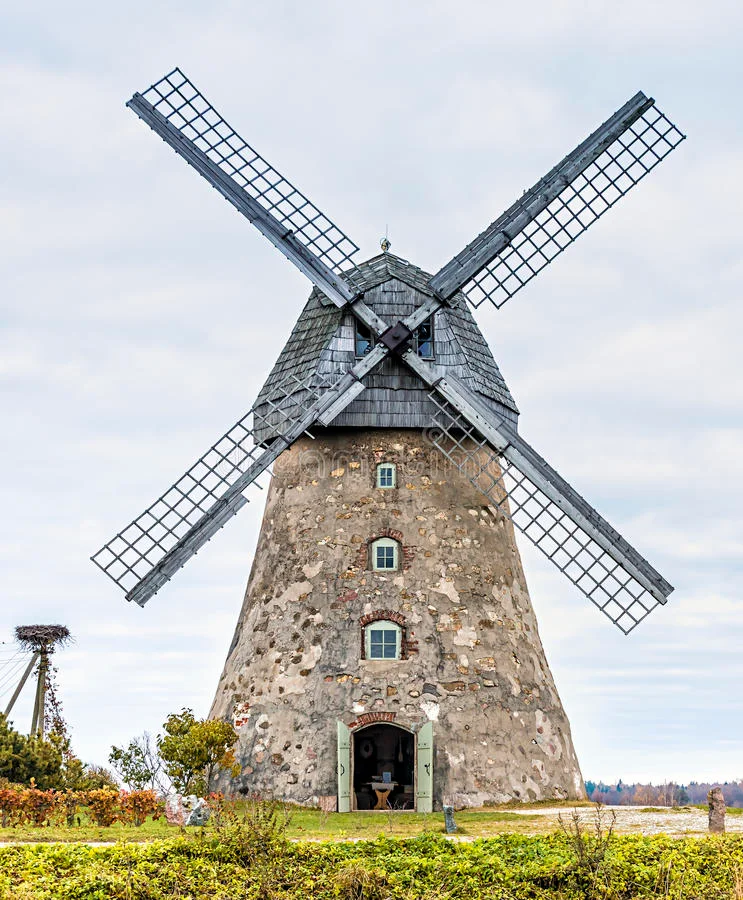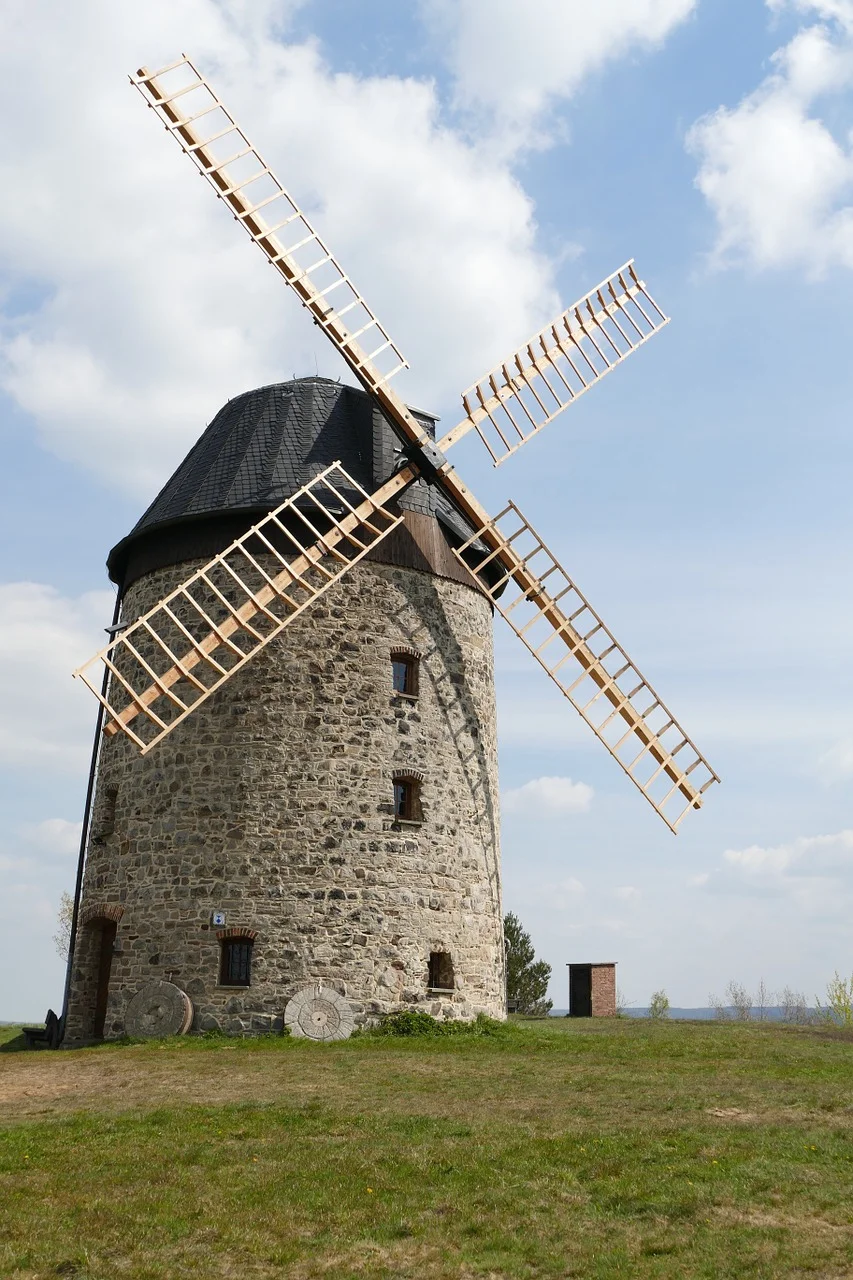Regarding the need for making a windmill, wind energy is a renewable energy source that has gained significant attention in recent years due to its potential to provide clean and sustainable electricity. It is generated by harnessing the power of wind through wind turbines, which convert the kinetic energy of wind into electrical energy.
The development of wind energy technology has made it possible to generate large amounts of electricity from wind power. The use of wind turbines has increased rapidly worldwide, and it has become a popular alternative to conventional fossil fuel-based electricity generation.
Wind energy is an important contributor to reducing greenhouse gas emissions and combating climate change. Unlike fossil fuels, wind energy does not produce harmful emissions that contribute to air pollution and global warming.
Wind energy is a clean and sustainable source of electricity that can help reduce the world’s dependence on fossil fuels. In addition to its environmental benefits, wind energy also offers economic benefits.
Wind power is now one of the cheapest forms of electricity generation, and the cost of wind energy is expected to continue to decrease as the technology continues to improve.
The use of wind energy has increased significantly in recent years, and it has become an important part of the global energy mix. The International Energy Agency predicts that wind energy could provide up to 18% of the world’s electricity by 2040.
However, the expansion of wind energy also poses challenges. The variability of wind speed and direction makes it difficult to predict and manage wind power generation.
This variability can result in intermittent power generation and may require the use of backup power sources to ensure a consistent supply of electricity. Despite these challenges, wind energy has significant potential as a clean and sustainable source of electricity.
The continued development and deployment of wind energy technology will be critical in achieving a transition to a more sustainable energy future.
Guidelines For Making a windmill

With the advancements in technology, wind energy can now be harnessed to produce electricity through the use of wind turbines or windmills. If you are interested in making a windmill, there are some guidelines that you should follow.
Firstly, it is important to understand the wind advantage and disadvantage. The advantage of wind energy is that it is a clean and renewable source of energy that does not produce harmful pollutants or greenhouse gases. It is also abundant and available in many parts of the world. However, the disadvantage of wind energy is that it is not always reliable and consistent, as the amount of wind can vary from day to day and season to season.
When making a windmill, it is important to consider the advantages of wind energy and design the windmill to maximize its potential. This can be achieved by selecting a location with strong and consistent winds, choosing the right size and type of wind turbine, and ensuring that the windmill is properly maintained.
Another advantage of wind energy is that it can be used to power devices that can help to clean up the environment. For example, wind-powered pumps are what can soak up oil spills in the ocean or on land. This is because the wind energy can be used to power pumps that can suck up the oil and transport it to a collection tank.
In addition to the advantages of wind energy, it is also important to consider the disadvantages of other technologies that are commonly used in homes and businesses. For example, water softeners are used to remove minerals from water, but they can also have negative impacts on the environment. What are the disadvantages of a water softener? The disadvantage of water softeners is that they use large amounts of salt, which can harm plants and wildlife when it is discharged into the environment.
Read Also: The Fascinating Making of Smartphone
Making a windmill can be a great way to harness the power of wind energy and contribute to a more sustainable future. By following the guidelines mentioned above and considering the advantages and disadvantages of wind energy and other technologies, you can create a windmill that is both effective and environmentally friendly.
When making a windmill, there are some key components that you will need. These include a tower to support the wind turbine, a rotor with blades to capture the wind, a generator to convert the wind energy into electricity, and a controller to regulate the voltage and current.
It is important to select the right size and type of wind turbine for your needs. Wind turbines come in different sizes and power ratings, and the size and power of the wind turbine that you select will depend on factors such as the wind speed in your location, the amount of electricity that you need, and the available space for the windmill.
It is also important to consider the location of the windmill. The windmill should be located in an area where there is a consistent and strong wind, with minimal obstructions such as trees or buildings. The tower should be tall enough to place the wind turbine above any obstructions, and it should be securely anchored to the ground to withstand the force of the wind.
Once the windmill is installed, it is important to maintain it properly. Regular inspections and maintenance can help to ensure that the windmill operates efficiently and safely. This can include tasks such as cleaning the blades, lubricating moving parts, and replacing worn or damaged components.
In addition to the environmental benefits of wind energy, using wind power can also provide economic benefits. Wind energy can help to reduce dependence on fossil fuels and provide a reliable and affordable source of electricity. In some cases, wind energy can also provide economic opportunities for local communities, such as jobs in wind turbine manufacturing and installation.
Making a windmill can be a rewarding and sustainable project. By following the guidelines and considering the advantages and disadvantages of wind energy and other technologies, you can create a windmill that meets your needs and contributes to a more sustainable future.
Read Also: Products That Can Be Derived from Human Waste
There are different types of wind turbines that can be used for generating electricity. Horizontal-axis wind turbines (HAWTs) are the most common type of wind turbine and are designed with blades that rotate around a horizontal axis.
Vertical-axis wind turbines (VAWTs) are less common and are designed with blades that rotate around a vertical axis. Each type of wind turbine has its own advantages and disadvantages, and the selection of the appropriate type will depend on the specific application.
In addition to the types of wind turbines, there are also different types of wind power systems. Grid-connected wind power systems are connected to the electrical grid and provide electricity to homes and businesses.
Off-grid wind power systems are not connected to the electrical grid and are often used in remote locations where grid electricity is not available. Hybrid wind power systems combine wind energy with other renewable energy sources, such as solar or hydro power, to provide a more reliable and consistent source of electricity.
While wind energy has many advantages, there are also some challenges that must be addressed. One challenge is that wind energy can be intermittent, which means that it is not always available when it is needed. To address this challenge, energy storage systems, such as batteries or flywheels, can be used to store excess energy for use during times when the wind is not blowing.
Another challenge is the potential impact of wind turbines on wildlife and the environment. Wind turbines can pose a risk to birds and bats, and their installation can require the clearing of land and disruption of natural habitats.
To mitigate these impacts, wind turbines can be sited in areas with minimal wildlife and habitat disruption, and measures can be taken to minimize the risk to birds and bats.
In conclusion, making a windmill can be a great way to harness the power of wind energy and contribute to a more sustainable future. By considering the different types of wind turbines and wind power systems, and addressing the challenges associated with wind energy, you can create a windmill that is both effective and environmentally friendly. Wind energy has the potential to provide a reliable and sustainable source of electricity for homes, businesses, and communities around the world.
Read Also: Selling Aflac: A Comprehensive Guide to a Rewarding Career in Insurance Sales

